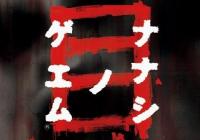Nanashi no Game: Me (Nintendo DS) Review
By Rudy Lavaux  04.11.2012
04.11.2012

Survival Horror isn't exactly widespread on handheld devices. Some might argue that the genre isn't exactly suited to that format, which would explain the apparent lack of representatives thereof. That didn't stop some developers from providing us with some few and far between games in that category over the years, with varying degrees of success. The DS got its own port of the first Resident Evil for example in the form of Resident Evil: Deadly Silence in 2006 which, while it succeeded in reproducing most of the atmosphere of the original, ultimately felt like a mediocre effort from Capcom. A much more interesting take on the genre would come in 2008 from Square Enix with Nanashi no Game, "The Game With No Name," developed by Epics. While nobody would have expected Square Enix, of all publishers out there, to come out with a Survival Horror, and for the DS of all systems, perhaps even fewer people would have expected it to actually be one of the biggest scares to be witnessed on any system, full stop, and turn out to be an excellent game. Square Enix itself apparently didn't, considering the game saw a relatively limited print run and sold out in a matter of weeks. It ultimately sold enough to warrant that the second game at hand here (actually a prequel) be made.
The first game recounted the tale of a cursed game that, after anyone started playing it, killed the player seven days later. Gamers took on the role of one of the unfortunate in-game players on his quest to prevent his own death by undoing the curse. Nanashi no Game: Me (The Game With No Name: The Eye) plays along the same lines but with a couple new twists.
Just like its predecessor, the in-game "cursed game" is presented in the form of an overhead-view 8-bit adventure game with graphical assets borrowed from Dragon Quest for the backdrops and Final Fantasy for the character sprites, while the in-game "real world" is a "3D First-Person Adventure" affair. As the lead becomes more and more cursed as the game goes, the 8-bit game becomes more and more glitchy, visually (like when a NES cartridge isn't making proper contact with the console), as well as audibly. While the whole thing is not exactly a Survival Horror in the strict sense of the term, since there's little "survival" involved, it's more of a first-person horror game that likes to play on the old nerves.
Nanashi no Game: Me opens directly with the virtual Japanese player booting up its handheld "TS" console (a DS mockup that can send and receive emails in addition to running games) and starting a new game. After being directly asked to name the character, a male protagonist, names must be given to his girlfriend and best friend. The names chosen are supposed to reflect his real girlfriend's and best mate's, as this is important to the whole story.

A creepy scene of the best friend murdering both the main character and girlfriend inside the cursed game, causing splashes of blood on the screen in all its 8-bit graphical g(l)ory, sets the tone for the rest of the game before being thrown back to the real world.
The game alternates phases of the in-game player actually working through the cursed game (Noroi no Game), and researching the death of his best friend in the in-game real world. Guiding the protagonist are a type of professor studying paranormal manifestations, as well as his girlfriend. The best friend, and apparently other players, fell because of that game and now this might not only be the case for the lead star, but his girlfriend as well. You, the real player, have only seven days to discover what causes these deaths, how to prevent it from happening to your protagonist and discovering more about his own story and what drove your best friend into insanity.
At first glance, the structure appears pretty much identical to the previous game. Play the chapters in order as the story moves to different locales to study the origins of the game and the curse. This time around, choices are given along the way to visit one place or the other, forcing two play-throughs if wanting to experience absolutely every possibility and discover all aspects of the story. This makes the whole thing feel a bit less linear, but not by much since everything still unfolds in a preset order. Some new 8-bit platforming and stealth "escape from the prison" sequences have also been introduced to further vary things in the cursed game, which actually gave birth in Japan to two DSiWare spin-offs, Noroi no Game: Chi and Noroi no Game: Goku, expanding the franchise even more and solidifying the myth of the cursed game by making it available in real-life as well, in some form.

The controls are the same as previously; in the first-person part the DS is held vertically and in "book" mode the 3D action is displayed over both screens at the same time. The protagonist is moved forward and back by pressing Up and Down on the D-pad, and strafing is allowed by pressing Left and Right. Turning the view, as well as the character himself, is done by holding down the stylus near the edges of the touch screen. Holding down the stylus in the centre of the touch screen also moves the character forward. Moving him forward by using both control inputs makes him walk faster, something that is often a necessity. This whole setup feels a bit awkward at first, and the slow pace would feel totally off-putting if introduced in any other game. Here, however, it feels appropriate when combined with the moody environments and eerie atmospheric audio.
The 8-bit part, on the other hand, is as classic as can be. The DS is held the regular way, the character is moved around by using the D-pad and talking is handled by pressing the A button. In some of the side-scrolling 8-bit sequences, the A-button allows for jumping. It's nothing ground-breaking, but at least it feels comfortable enough.
Another change from the original comes in the form of the protagonist's ability to see some things that are invisible to common people's eyes. Your character's left eye, which is represented by the DS upper screen when holding the DS vertically, is capable of seeing prints left by other TS players. His vision through the left eye also gets blurred and distorted when the cursed spirits of dead players are near, which makes for a nice effect.

Don't get fooled into thinking that both screens working together provide any kind of auto-stereoscopic 3D effect though, because that is not the case. Both screens are simply used to give a broader field of vision of the action, albeit with a blind spot in the middle where both screens are separated.
One of the improvements over the previous iteration is the more puzzle-heavy gameplay. Indeed, specific riddles and mechanics requiring the player to do things in the 8-bit world to alter or affect the real world are much more common-place this time around, which make for a more refined experience overall and helps to keep things interesting for people who played the first game and who might find that the very similar look and feel breaks the surprise effect that Nanashi no Game had on those who played it in 2008.
Indeed, a couple locations found in the first game are back here in an almost unaltered form, which feels kind of cheap on Square Enix's part. The cheapest aspect comes from the soundtrack, which is pretty much the exact same as in the previous game. Since it was already minimalistic to begin with that's not too much of a big deal, but it would have been appreciated to have been treated to some more new tracks as a reward for investing money in both games.
That's not to say that the value isn't there, since this prequel feels like a more refined package on the whole. Given how good the first was, seeing some things rehashed this time around feels like a very minor concession when compared to the pleasure of being treated to a new game in the same vein as its excellent predecessor, with some welcome refinements added for good measure.

Cubed3 Rating
Exceptional - Gold Award

Nanashi no Game: Me starts off like it's much of the same stuff that has already been done on DS with its predecessor, but turns out original enough to keep fans of the first one hooked right until the end. Some of the further tweaks also help the whole package to feel much more refined, such as the "Noroi no Game" stages that have to be unlocked and can sometimes be a tough challenge to complete, all adding to the value of the product. At time of writing, the second game has yet to get any kind of announcement of a fan-translation patch like the first Nanashi no Game did, making it kind of hard to get into for people with little-to-no knowledge of Japanese. Online help exists for those people of course, but figuring out the different riddles alone is the very essence of the game. Getting exterior help will spoil some of the fun that comes from thinking over the creepy hints. The lack of a Western release of either of these games is one of the most unfortunate things that ever happened to the DS. If you understand even a tiny bit of Japanese and are a DS-owning fan of the genre, it would be a major disservice by not owning either or both of these games.

The Game With No Name 2
![]() 9/10
9/10
![]() 0
(0 Votes)
0
(0 Votes)
 None
None  None
None  Out now
Out now  None
None Comments
Comments are currently disabled

 Sign In
Sign In Game Details
Game Details Subscribe to this topic
Subscribe to this topic Features
Features






 Top
Top

